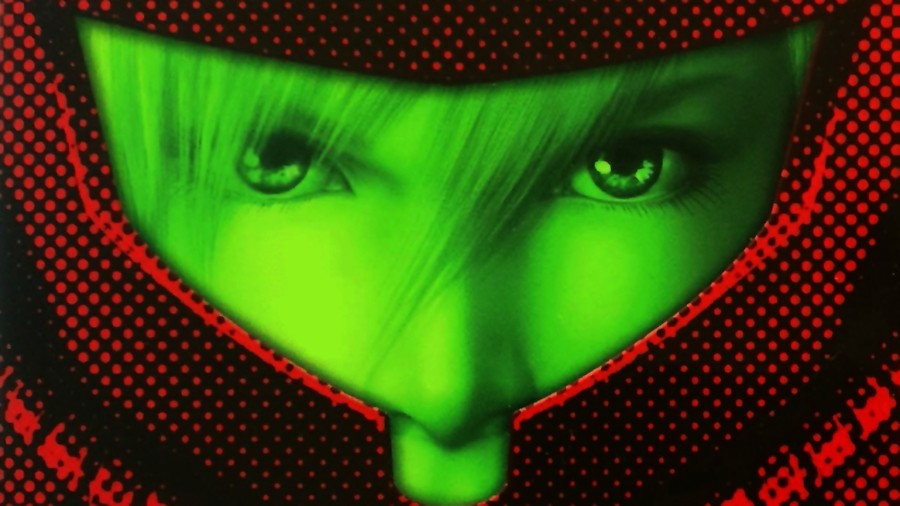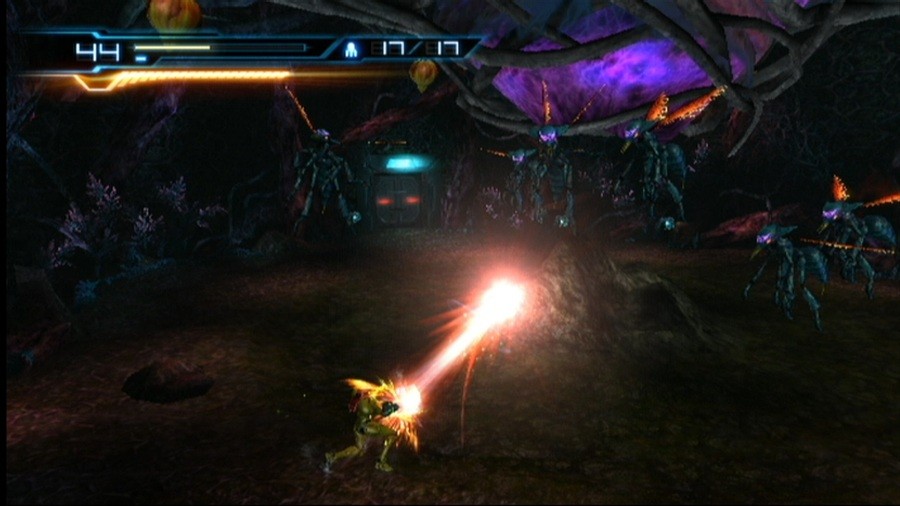Metroid Dread Has Plenty Of Other M’s DNA, And That’s No Bad Thing

Editor’s note: This article discusses an audio-based character moment near the end of Metroid Dread. If you’re sensitive to spoilers, you may want to finish the game and come back to this article later…
For 15 years, Metroid Dread was just a rumor. Now, it’s real, it’s been out for over a month, and it’s fantastic. Samus Aran’s latest adventure is packed with just about everything a Metroid fan could ask for, from wild boss fights to a massive labyrinthine map.
As the fifth and apparently final entry in the 2D ‘arc’ of the series, Dread is infatuated with the franchise’s history, taking plenty of inspiration from its narrative predecessor, 2002’s Metroid Fusion. But while playing Dread, we couldn’t help but spot flashes of a different Metroid game—the Wii’s eternally divisive Metroid: Other M.
If you’ve played Other M, you might see it, too. It trended on social media not too long ago, and it’s experienced something of a reappraisal from some players in recent years. Dread’s brutal melee combat and cinematic camera instantly bring to mind the much-maligned 2010 spinoff title. Look closer and you’ll notice how Dread continues Other M’s preoccupation with Samus’s life and relationships, as well as its attention to series lore in cutscenes and dialogue.
Of course, Dread also ditches Other M’s worst ideas—and there were plenty. The famously silent protagonist utters just a single line in Dread, in stark contrast to the reams of rambling monologues that gummed up Other M’s script. Players follow their own curiosity through the tunnels and towers of planet ZDR, rather than waiting for directions from a brusque commanding officer.

It’s been 11 years, but for Metroid, Other M left a lasting impression. Metroid Dread, whether it’s intended to or not, stands in 2021 as a response to its Wii predecessor. It’s the result of Nintendo carefully paring down Other M to its best elements, while quietly cutting away what made it so controversial.
It may seem like a strange comparison, but both games share DNA. Though Other M and Dread were developed by different studios (Team Ninja and MercurySteam, respectively), the clear throughline between them is series lead Yoshio Sakamoto, who produced the latest title.
Nintendo gave Sakamoto carte blanche to make a big, loud AAA Metroid game for the red hot Wii. It would be the last Metroid game for six years
Sakamoto’s one of Nintendo’s oldest staff members, with credits dating back to the company’s earliest days in the video game industry. And since 1994’s Super Metroid, he’s been the mother brain behind the series. While Sakamoto stepped aside for the popular first-person spin-off Metroid Prime and its sequels, he was instrumental to the franchise’s 2D games in the 2000s. With the series at its height in the 2000s—with an online multiplayer shooter and a pinball game to its name—Nintendo gave Sakamoto carte blanche to make a big, loud AAA Metroid game for the red hot Wii. It would be the last Metroid game for six years.
Sakamoto positioned Metroid: Other M as a game about big ideas. In it, Samus would speak at length for the first time. It would blend the styles of 2D Metroid and Metroid Prime together, fill in some of the series’ vast empty universe, and use a groundbreaking control scheme. He gathered a huge team to accomplish this, bringing in staff from Nintendo, action game specialists Team Ninja, and CG studio D-Rockets to breathe life into a script he’d written that comprised nearly two hours of cutscenes.

The finished product was a spectacular mess in many players’ estimations. The controls asked you to use a lone Wii remote held sideways, requiring them to navigate in 3D with a D-pad and turn the remote to point at the screen to use missiles. The cinematics dragged and the dialogue was monotonous. Critics eviscerated Other M for its portrayal of Samus as naïve, sentimental, frightened—unfit for her own job.
Even worse, Metroid’s famous non-linear upgrade system was now tied to the whims of Samus’s former military C.O. Adam Malkovich. Instead of discovering the heat-resistant Varia Suit yourself, you had to sprint through a dangerous lava land that burns away Samus’s health before Adam deigns to “authorize” the use of her suit. Why she’s willing to harm herself to respect Adam’s authority isn’t well justified.
It’s difficult to see through all that gunk to catch a glimpse of the truly great ideas at the heart of Other M.
Other M turned out to be the inverse of what many fans love about Metroid—taking the player-driven discovery away and replacing it with scripted plot beats. Samus’s persona was no longer up for interpretation; she was now a rigid, defined character that many found hard to accept.
It’s difficult to see through all that gunk to catch a glimpse of the truly great ideas at the heart of Other M. Team Ninja clearly approached the gameplay with a deep appreciation for the series. They brought their signature brand of action to its combat, injecting Metroid’s once-fleeting monster encounters into tense duels with slo-mo dodges and parry moves. Samus tears off creatures’ tails and freezes their legs to the floor, leaping on their backs to fire lasers straight into their face. The camera relishes the jump to full third-person 3D—sweeping from room to room, pulling tight on Samus for finishing blows and drawing back for wide shots in those bright burning lava zones and murky swamps.
It’s funny to see how so many of Other M’s ideas are exactly what fans are head-over-heels for in Metroid Dread. The intense, protracted boss fights, that dynamic camera, even the lore-soaked narrative—it all goes back to Other M.

There were hints of this direction in MercurySteam’s criminally underplayed Metroid: Samus Returns in 2017. That game, which Sakamoto also produced, featured a new melee counter for Samus—similar in effect to the dodge parry in Other M—and some of the most adrenaline-pumping boss fights in the series. Even on the small screen of the Nintendo 3DS, the camera pulls close when Samus steps into save stations or counters a Metroid at just the right time.
With Dread, MercurySteam and Sakamoto pulled those elements together into an elegant package. Samus is zippier than ever, gaining new slide moves and air dodges. The HD visuals of the Nintendo Switch allow the camera to really zoom out, offering even wider shots of the game’s massive hallways, rain-slick rail terminals, and superheated caverns. It carries on Samus Returns’ interactive boss fight cutscenes, where you can hammer missiles into a space monster’s gullet if you land a melee counter just right.
For all the sci-fi action excess of MercurySteam’s Metroid games, Samus herself is written with remarkable restraint. The bounty hunter isn’t totally stoic; her eyes and body language quietly convey a whole range of emotions. And when she does speak in a climactic scene, it’s in her adoptive Chozo language. Players are once again invited to imagine what Samus is thinking rather than being told through narration.
Nintendo is well-aware that Other M would be on people’s minds leading up to Dread’s release. During a live demo of Dread after its E3 reveal, Nintendo staffer Theresa Apolinario was careful to point out that Samus’s ship A.I. ADAM, based on the overbearing Adam Malkovich, would play a much smaller role in this new game: “He doesn’t give any direction to Samus. It’s up to the player where they want to navigate and explore.” And in a September episode of the Nintendo Power Podcast, Chris Slate explicitly excluded Other M from the story arc that leads up to Dread.
While Nintendo likely didn’t want fans whose enthusiasm was soured by Other M to dismiss Dread, it’s clear to see that Sakamoto still thinks there’s gold left to mine in that hybrid entry. Metroid Dread won’t rehabilitate Other M’s reputation—but it doesn’t really need to. For some, Other M will always be a disappointment. For others, it’ll remain a misunderstood classic. No matter how people feel about it today, its legacy has shaped the future of the Metroid series.
Just don’t hold your breath for a remake.











